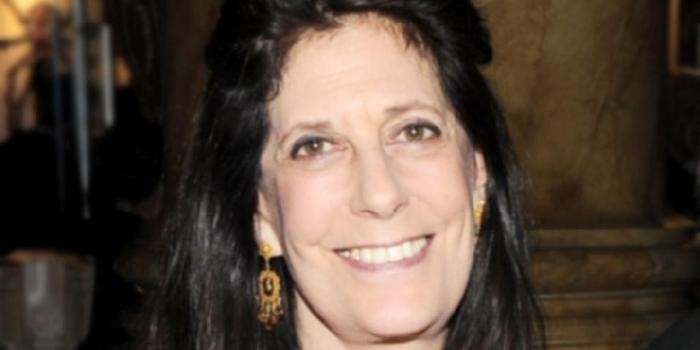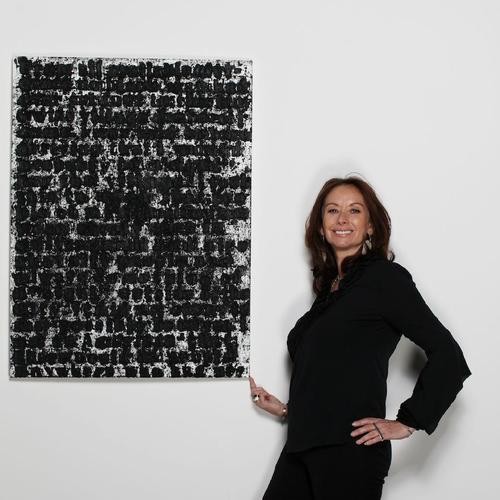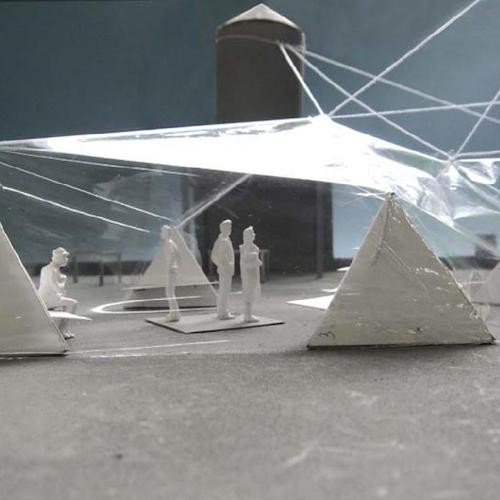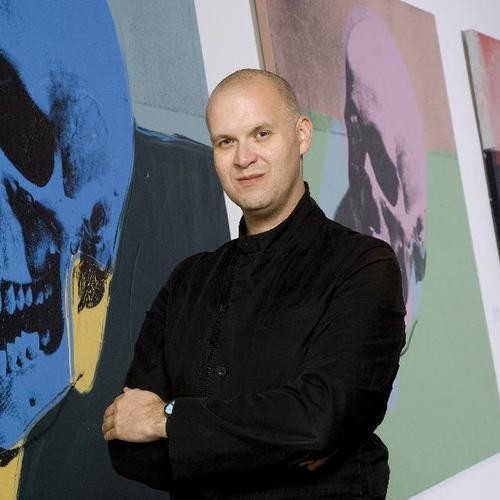Founded in 1981, BOMB magazine has been a critical forum for artists, playwrights, filmmakers, poets, and creatives from across the cultural spectrum, presenting in-depth dialogues between the most significant innovators in their fields about what it means, exactly, to live and work as an artist. A nonprofit publication, BOMB is beloved by the arts community for its close relationship with the living culture of its time, and a testament to its importance is that it is avidly funded by the artists it caters to.
One way this funding comes about is through the magazine's legendary annual art auction, which is taking place this year on April 19. To inaugurate Artspace's new partnership with BOMB—offering members a chance to bid for the works online in advance of the sale—Artspace editor-in-chief Andrew M. Goldstein spoke to BOMB co-founder and editor-in-chief Betsy Sussler about the origins of the magazine, its digital future, and why it is so critical to be an outlet for the "artist's voice."
PREVIEW WORKS FROM THE BOMB AUCTION AT RIGHT, AND CLICK HERE TO PLACE ADVANCE BIDS.
BOMB has now been putting artists, filmmakers, and creatives of all stripes in conversation for more than three decades. How did the magazine first come about?
We started the magazine because we saw a great void. It's not quite the same now, but back then artists themselves were never the first choice in terms of being considered the obvious source for their own ideas—critics were more likely to write about a work of art than to go ask an artist to talk about what they were thinking when they were making it. That said, for a few years I had been working with an ensemble theater group called Night Shift, not because I really wanted to become an actress but because I wanted to do screenplays or writing in general, and I thought that by acting and absorbing a playwright’s text I would learn more about dialogue. And in fact I did. One night, after I had been with Night Shift for a couple years, I was at a kitchen table with a bunch of friends—some visual artists, writers, and theater people who were all living in lower Manhattan the grungy late '70s—and I said, "Wouldn’t it be great if we started a magazine in which we actually talked about the work the way we talk about it amongst ourselves?" Everyone said, “Great idea, let’s do it," without having any idea about how to make a magazine.
Who was involved?
The artist Sarah Charlesworth was an early editor, Glenn O’Brien—who had been a managing editor at Interview when it really was Andy Warhol’s interview—was an early contributor, and Liza Bear, who started Avalanche, was an early advisor. So there were people who had a nominal idea about magazines, but I didn’t. I had done a little broadsheet with Eric Mitchell and Michael McClard called X Motion Picture, so I knew how a magazine didn’t get put together—it eventually became published by a collective and everyone had different ideas, no one was in charge, and it fell apart. With BOMB, I said, “I’m going to be editor-in-chief, and everyone is going to listen to me.” Not that anyone did, but the buck did stop with me, and that served its purpose. But we thought the magazine would be a wonderful kind of ephemeral moment that would last 10 to 12 issues, tops, and then disappear. It took some time to become BOMB as we know it today.
It's interesting, in light of your playwriting background, to see BOMB's interviews as written in a dialogue form, like a two-person play without stage direction. Was that was intentional?
Yes, that’s how I edited it—that's very perceptive. I thought of BOMB as a one-act play, with a catharsis and denouement that would be tied around revelation. In conversation you arrive at things you wouldn’t necessarily think of without that feedback, so there are often moments when artists have those revelations that become part of their creative process—when someone says something that connects, or a mistake happens and all of a sudden the artist understands what they've been doing for the past six weeks. Over time, however, it became clear that the initial conversation was a blueprint for subsequent drafts to develop, transform, and clarify, and so now both parties in an interview are given a chance to expand on their comments and give a final sign-off before publication.
The name itself for BOMB came out of the theater world, isn't that true?
What we like to say is that it came from Wyndham Lewis’s Blast, which was the first artists’ magazine, though it was short-lived because of World War I. We're much less bombastic than Blast, of course, but that was our template. But when we chose to call our magazine BOMB—and that was absolutely the right title—I was acting in Off-Off-Off-Broadway plays that were opening and closing quickly, as in they were plays that "bombed." I thought, that’s probably what we’ll do. But in fact BOMB filled such a great need that it became almost like a runaway train, with me hanging onto the caboose. The artists understood so deeply that they needed a magazine of their own, and as time went on we had visual artists, poets, fiction writers, musicians, choreographers, architects, and many others who wanted to be a part of it.
The notion of BOMB as "the artist's voice" is intriguing, because there's a school of thought that says artists should not talk about their work. Matisse, for instance, once said, "Whoever wishes to devote himself to painting should begin by cutting out his tongue." Why is it important to give artists a voice?
Well, Matisse said many things. I believe many people look at art and feel that they can’t enter into it, which isn’t true. Art is an open, egalitarian form, and understanding the artist’s point of view—knowing the artist’s intentions and thought processes—provides an endlessly fascinating foundation from which to look at what that artist is doing. So that’s why we honed in on the model we did, because we felt that an interviewer who was also a creator would best understand how to speak about the creative process. That point of view is our niche, and our strength—we publish interviews between artists.
As you mentioned, there were other artist-founded magazines in New York at the time—like Interview and Avalanche—and there were also established art magazines, like Artforum, which came to NYC from San Francisco in 1967, and ARTnews and Art in America. But from the beginning, BOMB felt like a different, more collaborative and community-driven publication. Why did that seem to be an of-the-moment approach?
In my experience, we were working with such a fertile network of artists—I was in a Gary Indiana play with Ross Bleckner paintings as backdrops, Jim Jarmusch was filming things for people, fiction writers were writing screenplays—that there was a lot of cross fertilization. In creating these communal art moments, we realized that the conversations themselves were very exciting, and of importance to the history of what was going on. Also, we were coming out of an ambition generation. When I first came to New York, the people I met were Gordon Matta-Clark, Keith Sonnier, and Jackie Winsor, among many others, and they were very fine, ambitious artists, and we had a vision of being the next generation of artists coming up and taking ourselves seriously, in the best sense of the word. We wanted to take art to the next level, because we felt a responsibility to move things forward.
Over the years you've matched up a remarkable range of creatives from all fields for illuminating interviews. How do you choose who to pair with whom?
We think about them carefully—in the same way BOMB is about conversation and dialectic, in a very Socratic fashion, we talk among ourselves about how to set up the interviews. We need to rely on both intelligence and gut instinct, because the artists need to be comfortable enough with each other to establish intimacy, but there should be a bit of conflict as well—otherwise the interview is not interesting and doesn’t up the ante. Hard questions have to be asked, but because goes the interview goes through so many drafts it doesn’t have to be right the first time. People can grope around with their answers until they get it right and find a truth that they feel holds weight.
You’ve published interviews that have been done in person, by telephone, and via mail—and now email—in a form of epistolary exchange. Which method do you find yields the best interview?
It really depends on situation. We do have a new epistolary form in which we have the artists email back and forth, and if people are already writers that's incredible because we, as editors, don’t have to do as much work. This can make for a real call and response in conversations between novelists, for instance. Between visual artists in-person is best, and you don’t get those kinds of vernacular interviews anywhere else—you can get a real BOMB classic. You get language you don’t get to hear in any other way, which is why we call it "the artist’s voice." Poets are also good with artists. When you said Matisse would rather cut out his tongue than speak about his work, there certainly are artists who aren’t comfortable with speaking about their work but who are comfortable with a sensitive interviewer responding to and interpreting their work. My least favorite interview method is by phone, though, because you don’t get gesture or intonation.
What, to your mind, makes a "BOMB classic"? And do you have a favorite?
We’ve done 1,200 interviews, so for me to say I have a favorite… I couldn’t even go there, because I have about four hundred favorites. But a classic interview is one where you get a real, lucid sense of what it means to be an artist and make art, sustained in the artist's own language.
One of the highlights of the spring season has long been your annual BOMB auction, which, in the spirit of the magazine, is a collaborative and community-driven effort. Could you talk about this event?
BOMB is a nonprofit that receives support from foundations, the government, and from subscriptions, but I have always said the most important source of support is our annual gala which we have been doing for about 20 years. The auction features works donated directly by artists in our community, and we never pressure anyone to donate, because that’s not the point of doing an interview. If they've participated in the process, though, they're much more likely to give work because they enjoy the process and what it reveals. Often they also identify someone else they think we should feature. Not only is BOMB the artist’s voice but we are truly published by the artist community, because they have supported us from the get-go and make it possible for us to continue.
Do the auction proceeds go to fund the magazine's operations?
Yes. What’s wonderful is that the magazine is no longer just a quarterly—now there's a huge online presence, and we have an audience we never thought we could reach because of our website. The interviews from our archive that we have put online draw 1.5 million visitors per year, and the site is growing. We received a Mellon Foundation grant, a Warhol Foundation grant, and a NISCA foundation grant to put our entire archive online as a virtual library. By 2014 our interviews will be joined by 4,000 primary documents, artists’ essays, literature, and poetry, all of it cross-referenced. I think of it as like the library of Alexandria before it burned, but in terms of the New York City art world.
Now we also do Web-exclusive content on BOMBlog, which is edited by emerging artists and writers who create a new vision of what BOMB will become. In a sense it's 1981 all over again, with emerging artists interviewing mentors and peers in almost daily posts. To me, this is the best thing we can do—we’ve set the standards and now others are off and running with it, so I can step out of the way. That tells me that 30 years from now we can still be going, because BOMB really is about the artists and not about any one person.
























